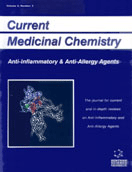Abstract
Tumor necrosis factor receptor associated periodic syndrome (TRAPS) is a hereditary auto-inflammatory periodic fever syndrome associated with autosomal dominant ectodomain mutations in the 55kDa tumor necrosis factor receptor (TNFRSF1A). Over forty mutations in TNFRSF1A are associated with TRAPS. Plasma levels of soluble TNFRSF1A (sTNFRSF1A) are abnormally low in TRAPS patients, as is shedding of TNFRSF1A by some patients leucocytes. It was hypothesised that a deficit in neutralisation of TNF by sTNFRSF1A in TRAPS might result in an increased sensitivity to the inflammatory effects of TNF. However, not all TRAPS-related TNFRSF1A mutations result in defective receptor shedding by leucocytes. We found that dermal fibroblasts, but not leucocytes, from TRAPS patients with C33Y mutation demonstrated reduced shedding of TNFRSF1A, and that shedding of both wild-type and mutant truncated TNFRSF1A from transfected cell lines was similar. It is unlikely that a defect in TNFRSF1A shedding fully explains the clinical features of TRAPS. We investigated the behaviour of TRAPS-related TNFRSF1A mutants compared with wildtype in transfected cell lines: the mutant forms of TNFRSF1A retained signalling functions, but showed abnormalities of intra-cellular trafficking and TNF binding suggestive of protein misfolding. The severity of the abnormalities were observed with different mutants correlated with the degree of penetrance and clinical severity. We hypothesise that aggregation and ligand-independent signalling of mutant TNFRSF1A may occur. The increased understanding of the genetic basis and pathophysiology of TRAPS has facilitated therapeutic advances in the clinical management of this condition, particularly the use of the TNF-neutralising agent etanercept.
Keywords: second cysteine-rich domains (CRDs), mutations, TNFRSF1A gene, TNF receptorassociated death domain (TRADD), amyloidosis, recessive autoinflammatory disorder
 8
8

